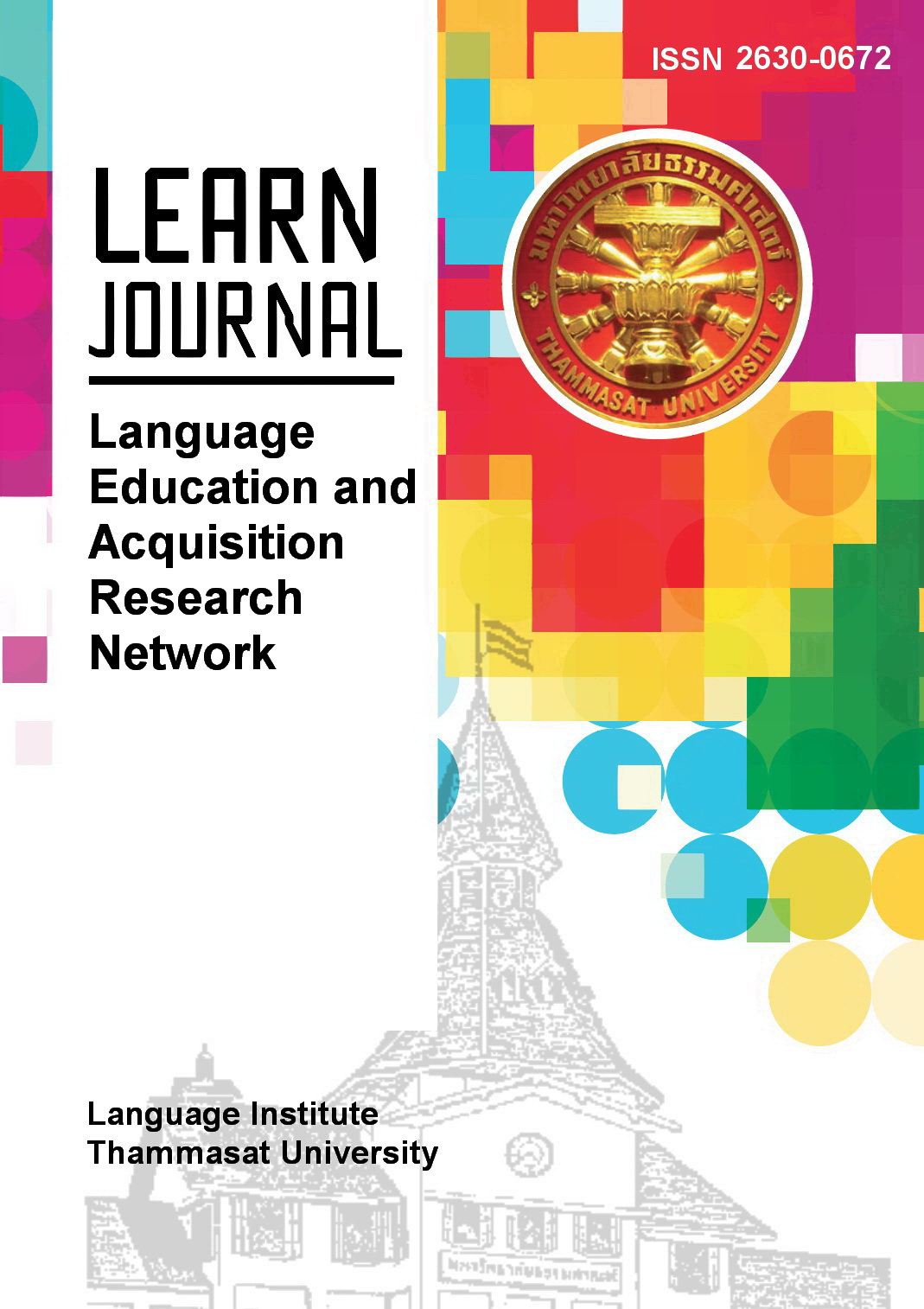Exploring Students’ Diversity in a Differentiated Classroom
Main Article Content
Abstract
Differentiated classrooms accommodate students’ diverse needs, however, tailoring learning to meet students’ individual needs is challenging for teachers. This study explores students’ diversity in an English as a foreign language (EFL) classroom setting, especially students’ needs in differentiated English language tasks and assessments through a quantitative survey. The survey consists of a questionnaire investigating students’ different needs in a differentiated English classroom. The data were gathered through an online survey for junior high school grade 8 students in Yogyakarta Province, Indonesia. Eight hundred and eighty-five students aged between 12 to 15 years participated in this study. The survey data were analyzed using descriptive statistics. Additionally, 102 students voluntarily joined a semi-structured interview session. The results of the interview were then analyzed using thematic analysis. This study revealed that students have various needs regarding their English learning goals, as well as the assessment of the four language skills activities and products, media preferences, favorite topics, task setting, and teacher’s role preferences. Implications of the results for accommodating students’ diverse needs in the EFL classroom are discussed.
Article Details
References
Aiken, L. R. (1985). Three coefficients for analyzing the reliability and validity of ratings. Educational and Psychological Measurement, 45, 131-142.
Aldossari, T. (2018). The challenges of using the differentiated instruction strategy: A case study in general education stages in Saudi Arabia. International Education Studies, 11(4), 74–83. https://doi.org/10.5539/ies.v11n4p74
Algozzine, B., & Anderson, K. M. (2007). Tips for teaching: Differentiating instruction to include all students. Preventing School Failure, 51(3), 49–54. https://doi.org/10.3200/PSFL.51.3.49-54
Berliner, D. C., & Biddle, B. J. (1995). The manufactured crisis. AddisonWesley
Birbaumer, N., & Schmidt, R. F. (2006). Biologische Psychologie (7th ed.). Springer.
Braun, V., & Clarke, V. (2006) Using thematic analysis in psychology. Qualitative Research in Psychology, 3(2), 77-101. https://doi.org/10.1191/ 1478088706qp063oa
Brennan, A. (2021). Differentiation through choice as an approach to enhance inclusive practice. REACH: Journal of Inclusive Education in Ireland, 32(1), 11–20. https://www.reachjournal.ie/index.php/reach/ article/view/13.
Brown, H. D. & Heekyeong, L. (2015). Teaching by principle: An interactive approach to language pedagogy. Pearson Education.
Carver, A., & Bailey, J. (2010). Unit pages: Differentiation for 200 students. Science Scope, 33(6), 12–17.
Chapman, C. & King, R. (2005). Differentiated assessment strategies: One tool doesn't fit all. Corwin Press.
Dixon, F. A., Yssel, N., McConnell, J. M., & Hardin, T. (2014). Differentiated instruction, professional development, and teacher efficacy. Journal for the Education of the Gifted, 37, 111-127.
https://doi.org/10.1177/0162353214529042
Dotger, S., & Causton-Theoharis, J. (2010). Differentiation through choice: Using a think-Tac-Toe for science content. Science Scope, 33(6), 18–23.
Dudeney, G. & Hockly, N. (2008). How to teach English with technology. Pearson Education.
Ebrahimi, S., & Javanbakht, Z. (2015). The effect of topic interest on Iranian EFL learners’ reading comprehension ability. Journal of Applied Linguistics and Language Research, 2(6), 80-86.
Harmer, J. (2001). How to teach English. Longman.
Heinich, R., Molenda, M., & Russell, J. D., (2002). Instructional media and technologies learning. Prentice Hall.
Lee, S., & Pulido, D. (2016). The impact of topic interest, L2 proficiency, and gender on EFL incidental vocabulary acquisition through reading. Language Teaching Research. 22(1), 118–135.
Locke, E. A., & Latham, G. P. (2006). New directions in goal-setting theory. Current Directions in Psychological Science, 15(5), 265-268.
Luoma, S. (2004). Assessing speaking. Cambridge University Press.
Nicolae, M. (2014). Teachers’ beliefs as the differentiated starting point: Research basis. Procedia – Social and Behavioural Sciences, 128, 426–431. https://doi.org/10.1016/j.sbspro.2014.03.182
Nunan, D. (2004). Task-based language teaching. Cambridge University Press.
http://dx.doi.org/ 10.1017/CBO9780511667336
Roblyer, M.D. & Doering, A.H. (2013). Integrating educational technology into teaching (6th ed.). Pearson.
Sousa, D. A., and C. A. Tomlinson. (2011). Differentiation and the brain: How neuroscience supports the learner–friendly classroom. Solution Tree Press.
Sternberg, R. J., & Grigorenko, E. L. (2005). Intelligence and culture: how culture shapes what intelligence means, and the implications for a science of well-being. In F. A. Huppert, N. Baylis, & B. Keverne (Eds.), The science of well-being (pp. 361–377). Oxford University Press. https://doi.org/10.1093/acprof:oso/9780198567523.003.0014
Tomlinson, C. A. (1999). The differentiated classroom: Responding to the needs of all learners. ASCD.
Tomlinson, C. A. (2000). Reconcilable differences: Standards-based teaching and differentiation. Educational Leadership, 58(1), 6-11.
Tomlinson, C. A. (2001). Differentiated classroom: Responding to the needs of all learners. ASCD.
Tomlinson, C. A., & Jarvis, J. (2009). Differentiation: Making curriculum work for all students through responsive planning and instruction. In J. S. Renzulli, E. J. Gubbins, K. S. McMillen, R. D. Eckert, & C. A. Little (Eds.), Systems and models for developing programs for the gifted and talented (pp. 599-628). Creative Learning Press.
Tomlinson, C. A., & McTighe, J. (2006). Integrating differentiated instruction and understanding by design. ASCD.
Tomlinson, C. A., & Moon, T. R. (2013). Assessment and student success in a differentiated classroom. ASCD.
Tomlinson, C. A., & Imbeau, M. B. (2010). Leading and managing a differentiated classroom. ASCD.
Towndrow, P.A., &Vallace, M. (2004). Using IT in the language classroom. Pearson Education Southeast Asia Pte Ltd.
Ur, P. (1996). A course in language teaching. Cambridge University Press.
Valiandes, S. (2015). Evaluating the impact of differentiated instruction on literacy and reading in mixed ability classrooms: Quality and equity dimensions of education effectiveness. Studies in Educational Evaluation, 45, 17–26.
Vygotsky, L. S. (1978). Mind in society: The development of higher psychological processes. Harvard University Press.
Wan, S. W.-Y. (2017). Differentiated instruction: Are Hong Kong in-service teachers ready? Teachers and Teaching, 23(3), 284–311. https://doi.org/10.1080/13540602.2016.1204289
Wiggins, G., & McTighe, J. (2005) Understanding by design (2nd ed.). ASCD.


